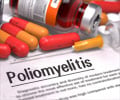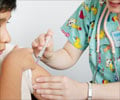Global polio eradication programs have significantly cut the incidence of the disease, yet it is an apt time to take stock of what remains to be done to ‘Stop Polio Forever’.
24th October, 2008
October 24, 2008 marks World Polio Day. While the world lauds the success of two decades of committed global eradication programs, that have significantly cut the incidence of the disease, the event is also time for stock taking of what remains to be done to ‘Stop Polio Forever’.Places under attack in 2008
• 449 cases in India
• 67 cases in Pakistan
• 20 cases in Afghanistan
• 5 cases from Nepal
• 692 cases from Nigeria
• 25 cases from Central African Republic
• 2 cases from Angola
The global polio eradication initiative in India seeks to arrest the transmission of Type 1 polio virus, especially in Western Uttar Pradesh and Bihar. Campaign is on in full swing in Bihar to improve immunity of the population after the recent floods.
Drive against polio has intensified in the African countries. Addressing the Health Ministers of Africa, WHO Director-General Dr Margaret Chan said: "African countries are again at risk of polio. The most dangerous strain of the disease is affecting the northern states of Nigeria. And this outbreak has already begun to spread to neighboring countries."
Setback to anti-polio initiatives
The anti-polio drive will not see the light of day without the contribution of public health workers who face several odds, even life threatening risks to ensure people from remote areas get access to vaccination. Vaccinators and other polio staff are under danger of attack, risk of murder, and kidnapping, in spite of security measures offered by the UN. A hostile-free environment is imperative to allow health workers to carry out their tasks efficiently.
In the context, the recent attack on Polio workers in Afghanistan, two of whom lost their lives following the attack, is indeed a setback to the anti polio drive. Two polio workers in Somalia were also victims of an armed attack, underlining the grave risks faced by polio workers in the region.
The United Nations Secretary-General has strongly condemned these attacks.
Polio unplugged
Polio or Poliomyelitis is a highly infectious viral disease, which targets the nervous system. Its most virulent forms can cause paralysis of the nervous system in just a few hours. The risk is pronounced for children below the age of five.
Polio virus is of three types -Type 1, 2 and 3. Type 1 and Type 3 still pose a challenge to polio eradication; thankfully Type 2 is no longer a threat. Endemic areas, especially parts of Africa and Afghanistan are vulnerable to the polio virus.
Transmission of Polio virus occurs via the fecal-oral route, triggered by contact with contaminated surfaces. The virus can spread to a whole group or a community in the presence of improper sanitation and unhygienic surroundings, person-person contact, and consumption of unclean water or food.
Understanding symptoms
Ninety percent of the time, Polio is Asymptomatic or without any symptoms. Symptomatic polio or polio with symptoms occurs only in 10% of the cases. Symptomatic polio is categorized under three distinct types.
• Abortive polio: Symptoms are very much like flu where the victim feels under weather. Sore throat, diarrhea and respiratory infection, are some of the common symptoms.
• Non-paralytic polio: Neurological symptoms like sensitivity to light and stiff neck show up in almost 1 to 5% of polio victims.
• Paralytic polio: Affecting 0.1 % to 2% of victims, this acute polio attack causes muscle paralysis. Victims suffer problems with movement of limbs as well as breathing problems. Severe cases also turn fatal.
Diagnosis
After evaluating the symptoms portrayed, experts advise laboratory evaluations on stool samples, or samples of cerebrospinal fluid or throat secretions. This is the only way to make a confirmed diagnosis.
Plug the virus
Since there is no known cure for this disease, prevention is the best bet.
Adhering to the stipulated immunization programs at specified intervals is the only way to beat the disease. Widespread Pulse Polio Campaign has been a success in offering immunity to large sections of people and has helped check the spread of polio. Stress on sanitation and hygiene is crucial to control the spread of the disease.
Polio Vaccine
Two vaccines employed widely have been a shot in the arm for the success of polio eradication programs.
• Inactivated Polio Vaccine or IPV as the name suggests contains the inactivated polio virus and is given as an injection. This vaccine has been employed since five decades.
• Oral Polio Vaccine or OPV, which is administered orally, contains a mild form of the active virus.
Polio immunization programme
The Polio immunization programme stipulates that four doses of Polio vaccine be administered to children during the period from infancy till 5 years of age.
• First dose is given at 2 months
• Second dose is at 4 months
• Third dose is between 6 to 18 months of age.
• The final dose, labeled as the booster dose is given between 4-6 years of age.
Help eradicate Polio
To start with, all children must avail their polio immunization as per the schedule, in order to remain protected against this devastating disease.
As informed citizens, let us spread the message in our community, especially amongst the underprivileged about the importance of timely vaccination for children below five. Educate the need to keep the surroundings clean to control spread of the virus.
Eradicating polio is indeed a way to make the world safer and healthier for our children. Though initiatives are on at the national and international level, as individuals we can do our bit to help such initiatives realize its ultimate goal.
Source-Medindia
SAVITHA/SK










